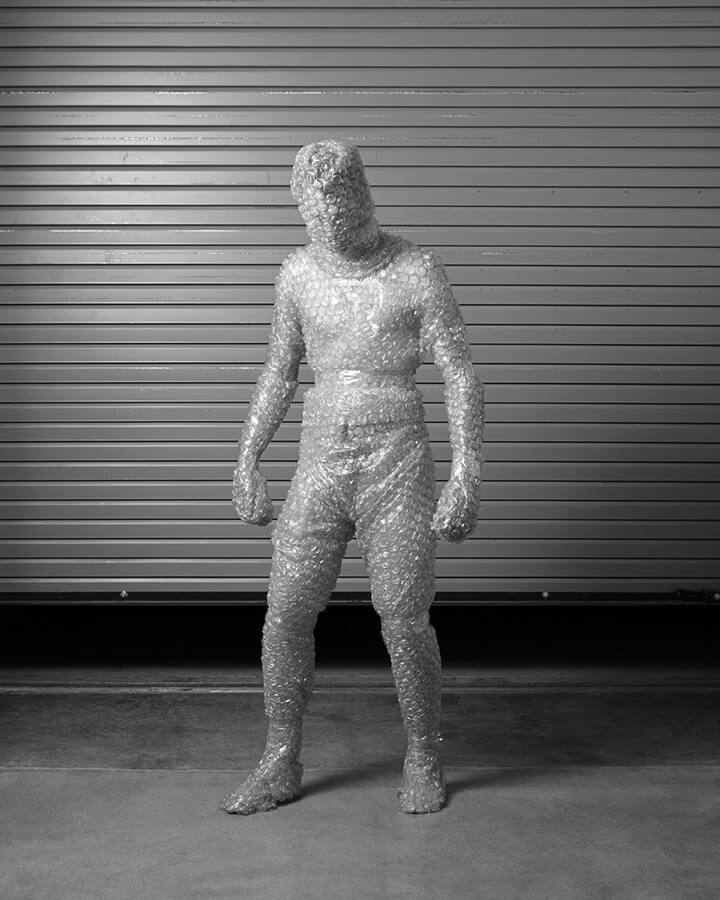Fragile (Recto)
Benjamin Dearstyne Hoste
Statement:
My practice examines commonly held assumptions, perceptions, or expectations as they relate to systems that underpin human experience. Using sculpture, installation, video, and site-based approaches, my work uses subtle figurative and temporal interventions to engage unseen or overlooked forces. It is often these forces, just beyond our peripheral vision, that fundamentally determine our individual, social, and political lives. Much of my work encourages participation and community engagement, through active participation or habitual exposure. These forms of engagement activate the viewer as an integral part of the work, turning viewers into participant observers.
For example, in Handle With Care the implausible stacking of large, asymmetrically weighted boxes by both artist and viewers tests our physical assumptions, toppling expectations and arousing our imagination. With Presbyopic Obstruction reimagined retail signage and window displays adorn a vacant storefront that has been converted into a camera obscura. Through juxtaposing ocular and oratory experiences, the installation explores how our individual perception is both consciously constructed and shaped—knowingly and unknowingly—by forces outside our control. Artists whose work has been influential in the development of my own practice include Zoe Leonard, Rachel Whiteread, Sophie Calle, and Walead Beshty; and scholars whose writing has informed my work include John Berger, Robert Morris, and Yi-Fu Tuan. Their work has repeatedly reshaped how I understand space and place, practice-based research, and relationships between the material and the conceptual. For example, place and site is of particular interest in my research in that they inherently conflate and embed a continuity of histories within themselves. Place and site often, through the collision of competing narratives, reveal the importance and influence of unseen and overlooked forces. My current research explores our intimate and shared histories and how they shape both our personal relationships and notions of self. The mathematical concept of tangency, which describes a specific kind of contact between two curves, provides a foundational entry point into the work. Tangency illustrates a perfect and smooth advancement, meeting, and retreat between two things and in this way becomes a metaphor for any deeply shared experience or characteristic. Just as two circles that are tangent are said to be just touching at a single point, so are two people who are kissing, their bodies separate entities, distant at all points except one, where they meet and are infinitely close to one another. This idea extends multidimensionally, for example to the practice of contact tracing, a process of sorting out linkages between individuals in space and time, as well as our own DNA, an identical duplication of nucleic acids that we intimately share.
As much as we can try and understand the lives of others through direct evidence, historical records, or shared narratives, our vantage point will always be uniquely personal. As a consequence, the personal is intimately fused to the social and political, demanding critical self-reflection and engagement as we seek to broaden our understandings. Ultimately, my practice comments on the ineffable structures shaping our lives that may at first appear random or arbitrary but are in fact designed with specificity and purpose.

